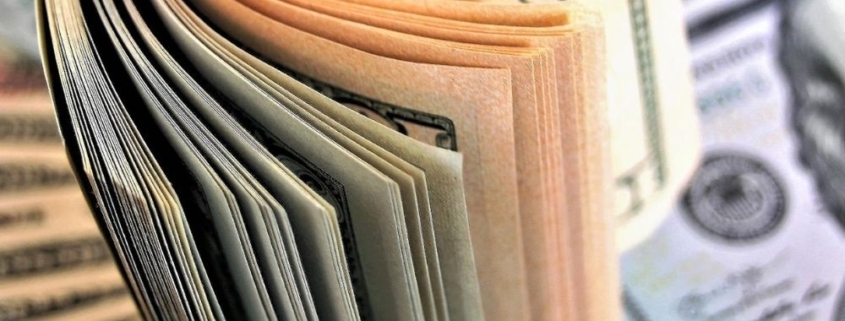The Commonwealth Seniors Health Card (CSHC) is to help you cover your medical expenses while self-funding your retirement.
Commonwealth Seniors Health Card
Funding your retirement is one thing. There is super, maybe the age pension, maybe some personal savings.
Paying your medical expenses however is a different story. Nobody thinks of medical expenses to begin with. We all imagine our retirement to be spent on golf courses, cruise ships and overseas trips. But with time medical bills will enter the scene. And this is when the Commonwealth Seniors Health Card (CSHC) comes into play.
Self-Funded Retiree
The Commonwealth Seniors Health Card (CSHC) is aimed at self-funded retirees, who don’t claim the age or DVA pension – even though they are of pension age – and instead just live off their super.
It is to help self-funded retirees with their medical bills. The government’s hope is that this additional support will allow you to stay self-funded, even as your medical bills increase with age.
Concessions
The CSHC comes with a range of possible concessions.
It might give you cheaper access to Pharmaceutical Benefits Scheme (PBS) prescription items and increase your benefits via the Medicare Safety Net. You might receive an energy supplement and receive other benefits from state governments and businesses. And there is a small chance that doctors agree to bulk-bill you as a CSHC holder.
The Centrelink / Department of Human Services website has more information about possible concessions.
Conditions
There are four conditions to qualify for the Commonwealth Seniors Health Card.
1 – You must be of pension age, which starts somewhere between 65 and 67 depending on your date of birth;
2 – You must be self-funded and not receive any income support from Centrelink or DVA (Department of Veterans Affairs);
3 – You must be an Australian resident currently living in Australia;
4 – Your annual adjusted taxable income (ATI) must meet an income test.
The good news is that there is no asset test. So this is different to the age pension.
Threshold
The threshold for you annual adjusted taxable income (ATI) is indexed and hence changes each year. In rough numbers, your ATI must be less than $55k when single and less than $90k as a couple. If you live apart as a couple due to illness, respite care or prison, then your combined ATI is about $110k.
Indexation
From 2001 until 2014 the ATI thresholds were not adjusted to inflation. And as a result, less and less self-funded retirees qualified for the CSHC.
With time this would have pushed the CSHC into oblivion. So in September 2014 indexation came back. And the income thresholds have been indexed every September ever since.
So you would think that increasing the income thresholds would make more Australians eligible for the CSHC.
But the indexation is offset by another change in the opposite direction. Since January 2015 deemed income from superannuation in pension mode is now included in your ATI and hence makes it harder to pass the income test.
Adjusted Taxable Income
Your adjusted taxable income (ATI) is your
1 – taxable income plus
2 – foreign income not taxed in Australia, plus
3 – total net investment losses, plus
4 – employer-provided fringe benefits (if exceeding $1,000), plus
5 – reportable super contributions and plus
6 – any deemed super income from a taxed source.
Let’s go through these one by one.
1 – Taxable income
Your taxable income is your gross income less deductions. Even if you don’t have to lodge a tax return, you might still have taxable income.
2 – Foreign Income Not Taxed in Australia
This relates to income you receive from outside Australia for which you don’t pay Australian income tax.
3 – Total net investment losses
Your total net investment losses are your net losses from rental-properties and from financial investments. You add these negatively geared losses back to your adjusted taxable income.
4 – Employer-Provided Fringe Benefits
Employer-provided fringe benefits include benefits such as cars, loans, housing, and health insurance. But you only add them to your ATI if they exceed $1,000.
5 – Reportable Super Contributions
Reportable superannuation contributions are not the compulsory 9.5% superannuation guarantee (SG) contributions your employer might have paid for you. It also doesn’t include the non-concessional contributions you might have paid out of your after-tax income.
Instead, it is the salary sacrifice you might have paid into your super fund as well as any additional super your employer might have paid for you in addition to SG.
6 – Deemed Super Income from a Taxed Source
Super benefits can come from an untaxed or taxed source. Most Australians only have super from a taxed source. You usually find untaxed sources only among retired former government employees.
Super benefits from an untaxed source are subject to tax and therefore already part of your taxable income and hence ATI. So there is no need to deem any income.
Super benefits from a taxed source while aged 60 or over are tax-free, however. As a result the actual payments are not included in your taxable income. And this is where deeming comes into play.
Your ATI includes a deemed amount of pension income for any pensions started post 2014. So not the actual payments, but a deemed amount.
New applicants on or after 1 January 2015 include deemed super income based in their adjusted taxable income.
This is a radical change, but it only applies to new applicants applying for the CSHC on or after 1 January 2015 and new pensions.
Pre-2015
This deeming of pension income only applies to CSHC cards issued and pensions started on or since 1 January 2015.
If you have been holding your current CSHC card since 31 December 2014 or earlier, then these pension benefits still fall under the old rules. Meaning there is no deeming of super income.
However, this grandfathering only applies to the actual pension in place as of 31 December 2014. If you start a new pension on or after 1 January 2015, then this new pension will be subject to the new rules, even though you might be a pre 2015-CSHC holder.
Calculation
Deeming means that the actual amounts withdrawn from your super account are not taken into account for the ATI. Instead deeming assumes a standard rate of return on your super pension assets. Your actual returns or pension payments might be different from this standard return.
The calculation uses the asset value of your super pension assets applying a set interest rate. This might sound familiar. The age pension also deems super income since 1 January 2015.
Overseas Travel
You can spend up to 19 weeks overseas without losing your current CSHC. If you are away for longer, you need to apply for a new card.
This is important if you held your CSHC since pre-2015. A new application would break the grandfathering rules and would mean that your new card would become subject to the deemed income rules we will discuss later.
If you have any questions, please reach out to us. There might be a simple answer to your query.
MORE
Age Pension
Preservation Age
Retirement Age
Disclaimer: numba does not provide specific financial or tax advice in this article. All information on this website is of a general nature only. It might no longer be up to date or correct. You should contact us directly or seek other accredited tax advice when considering whether the information is suitable to your circumstances.
Liability limited by a scheme approved under Professional Standards Legislation.



